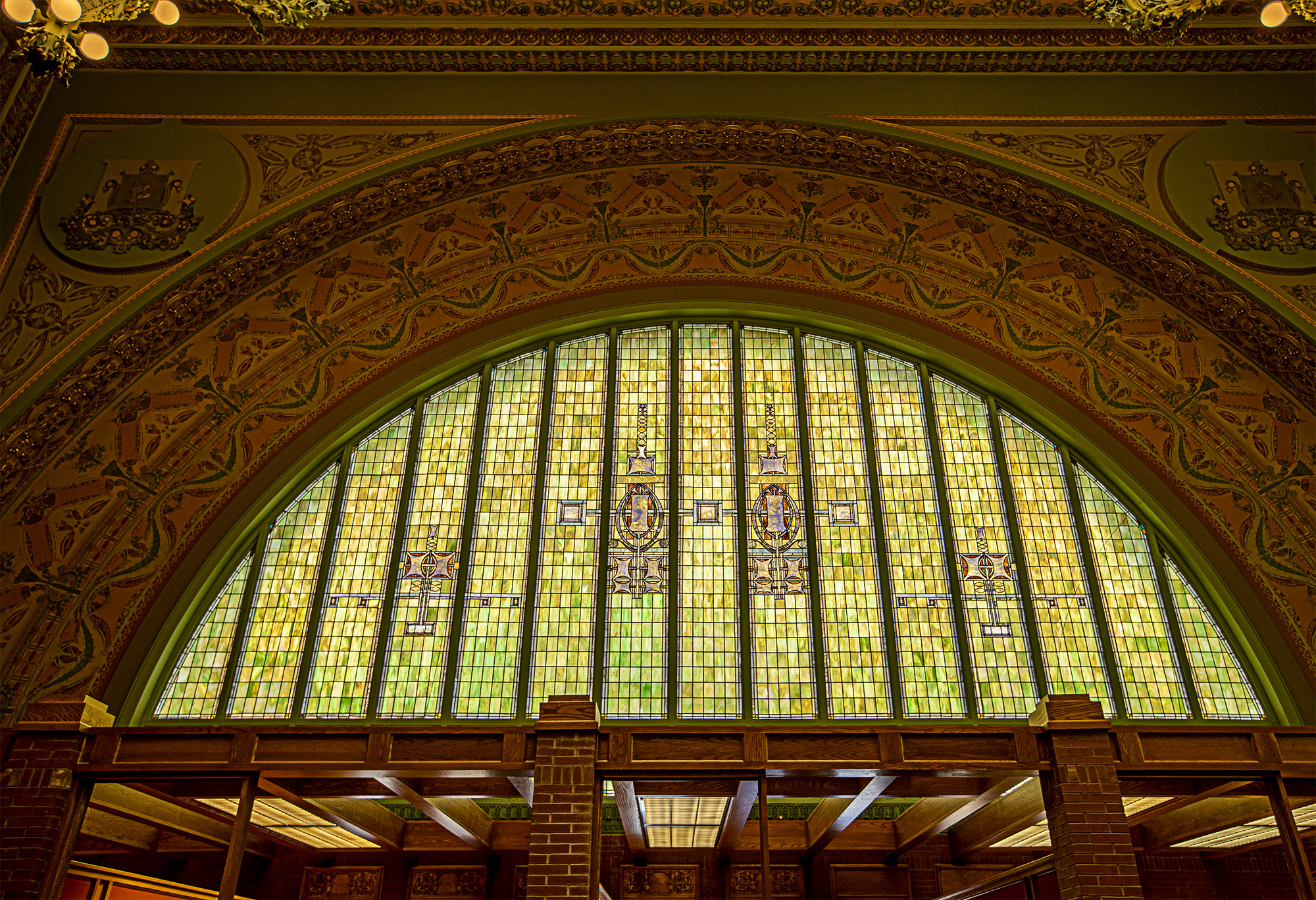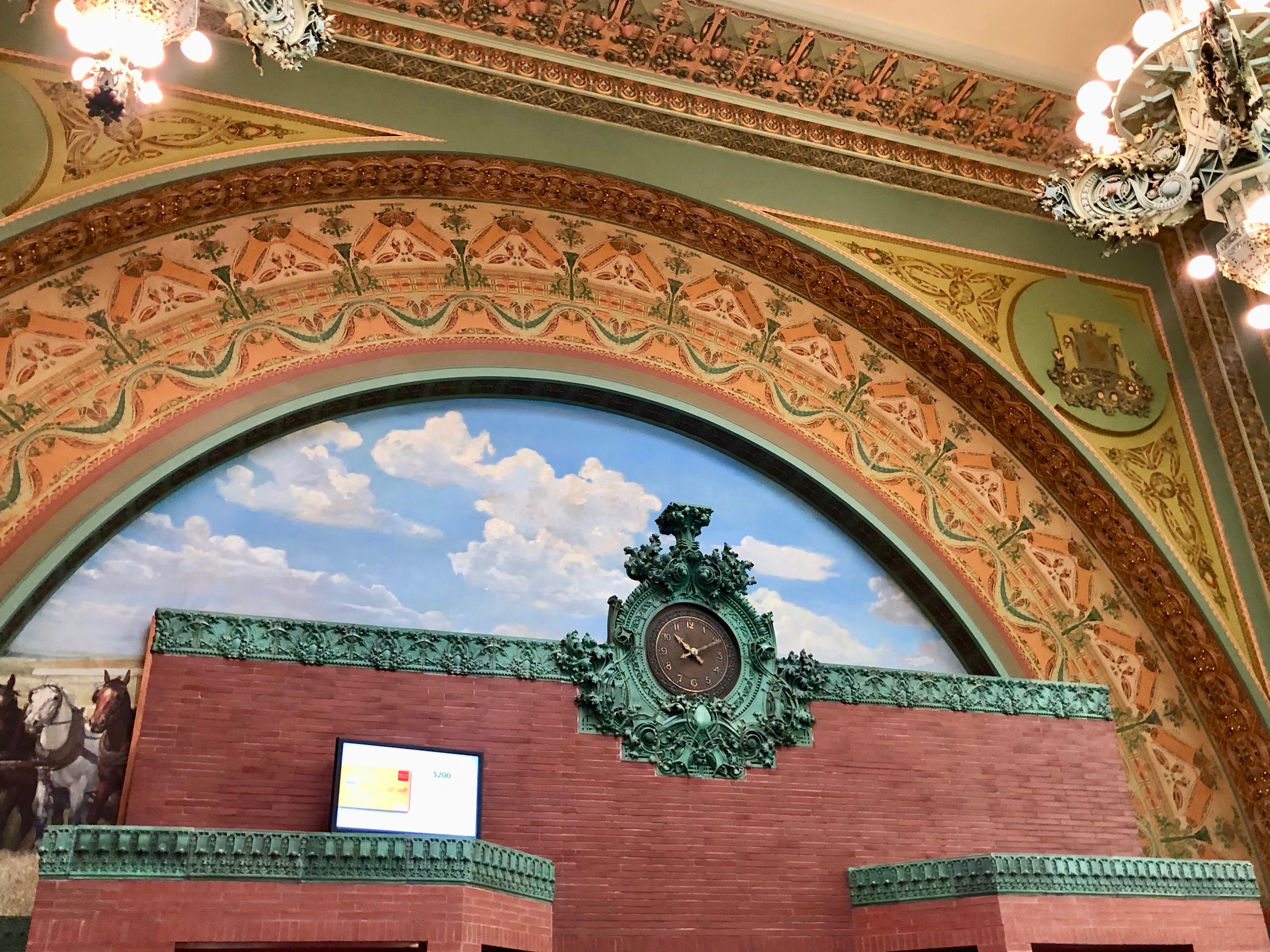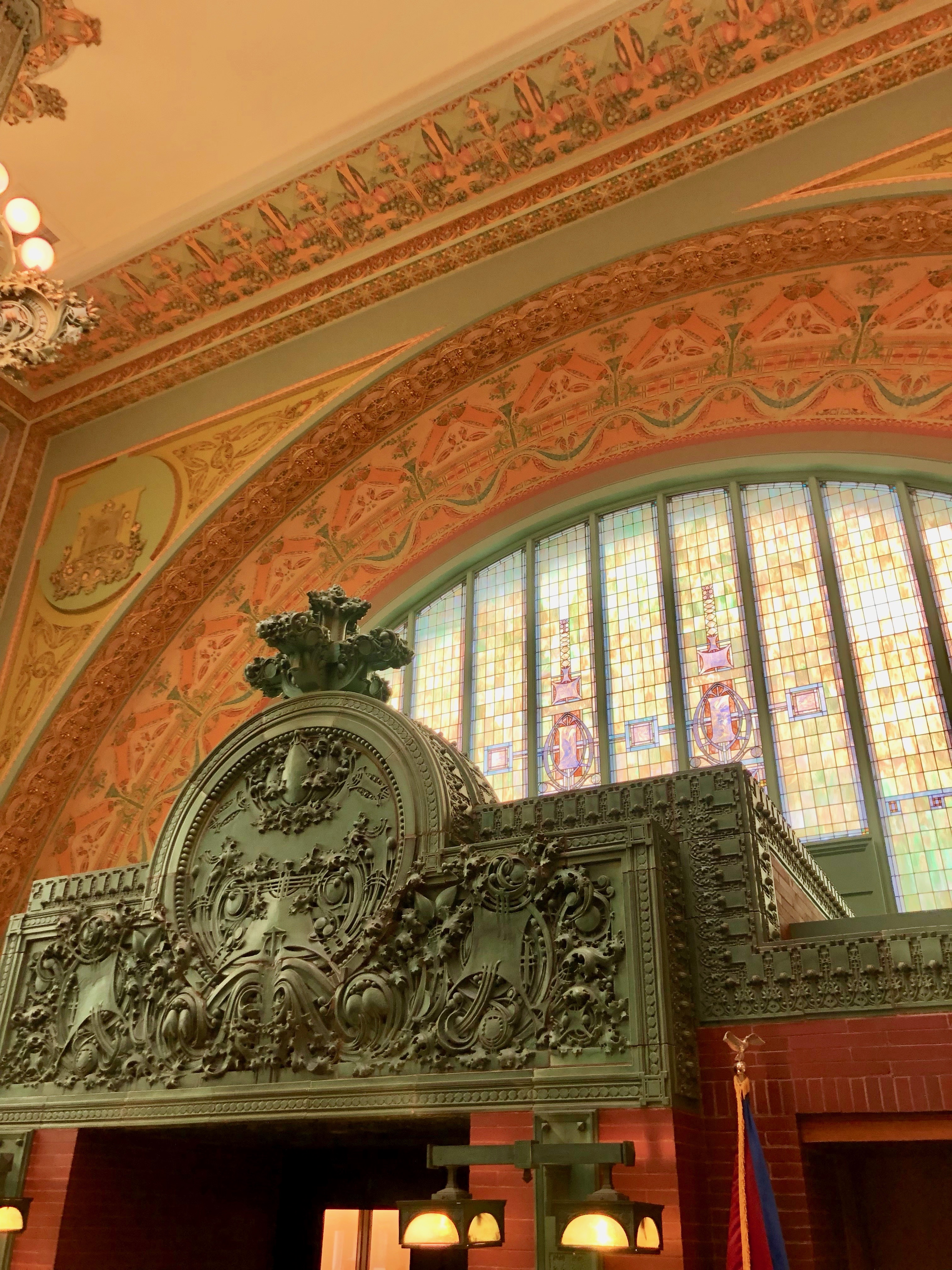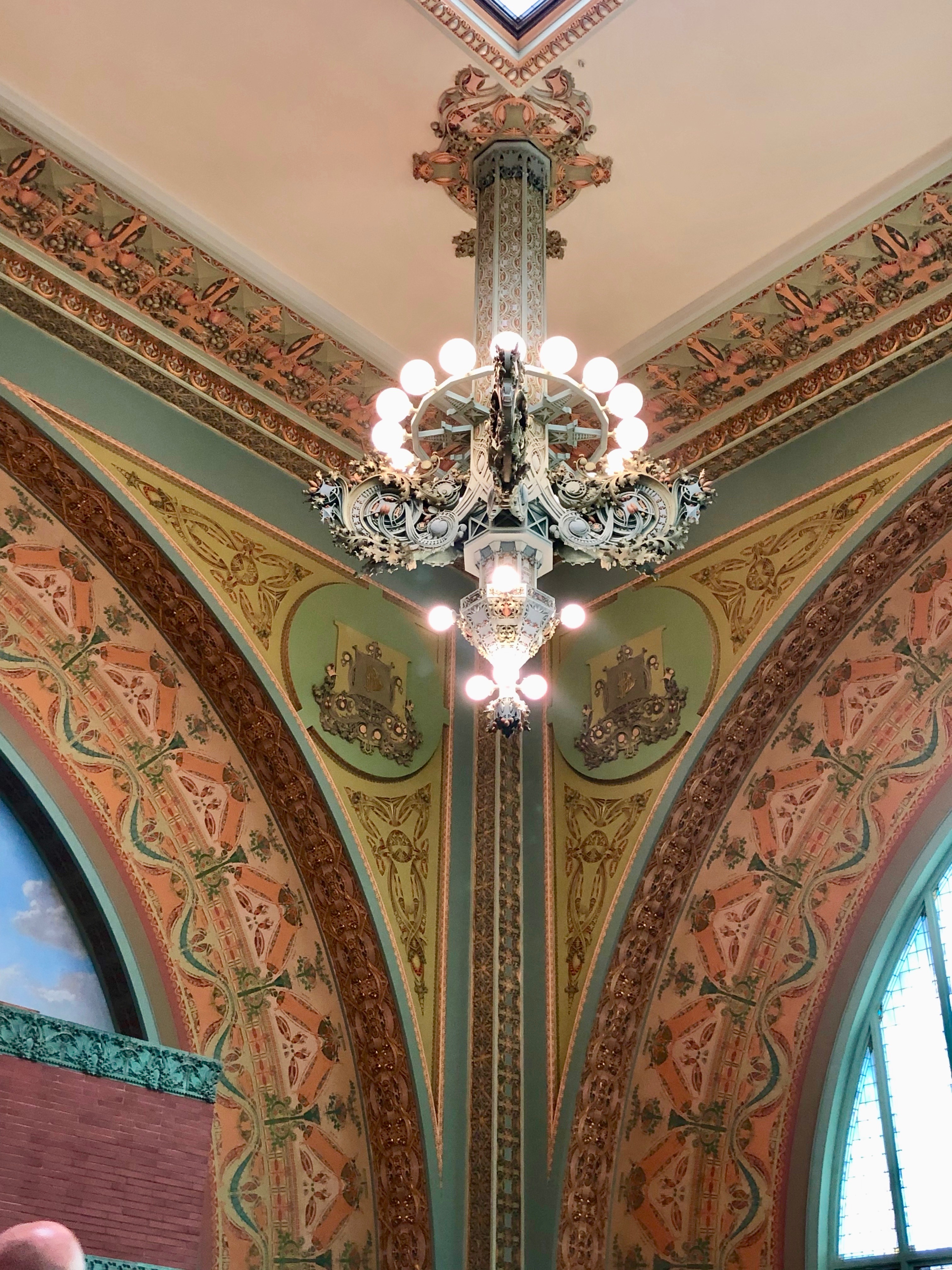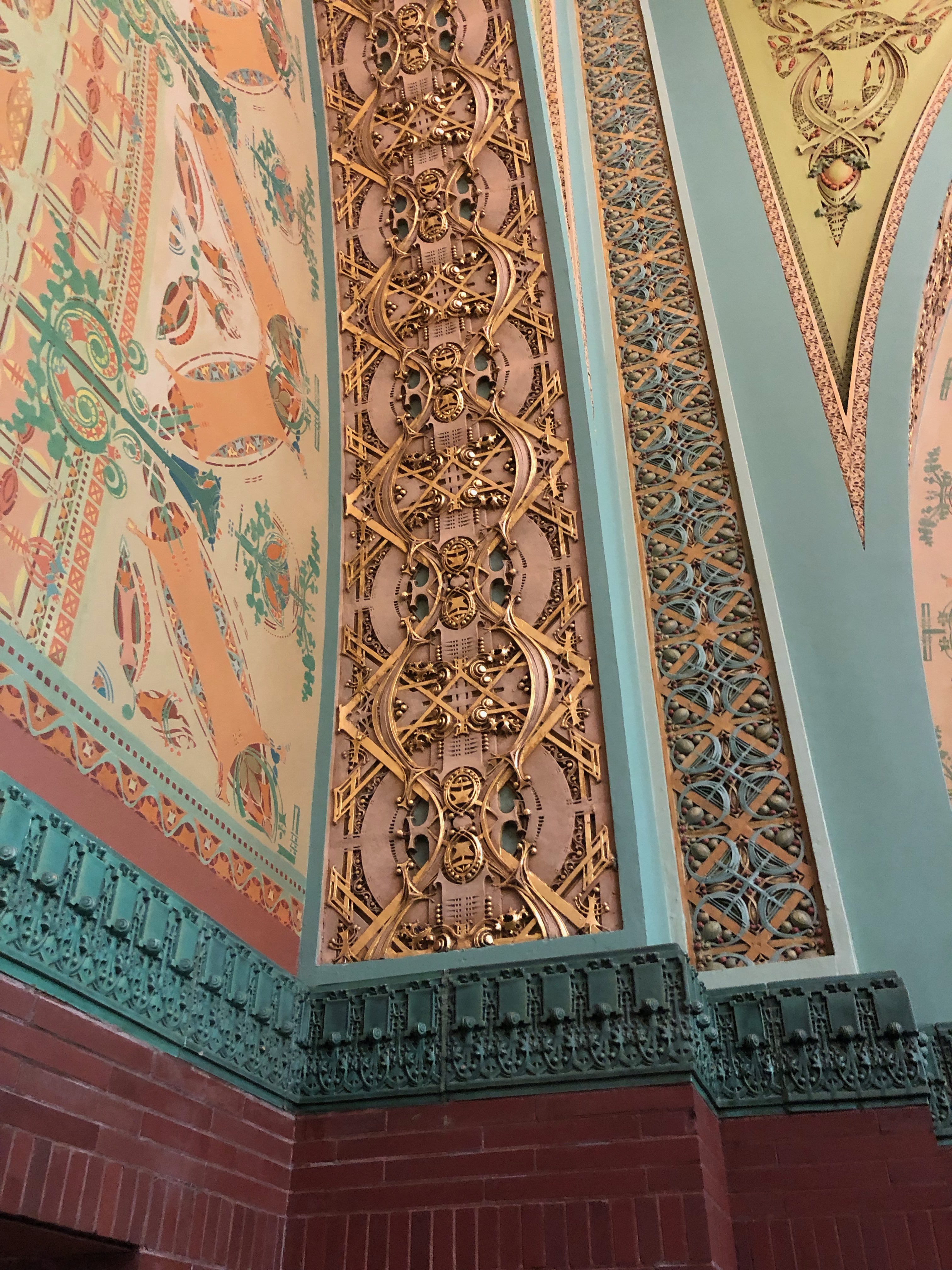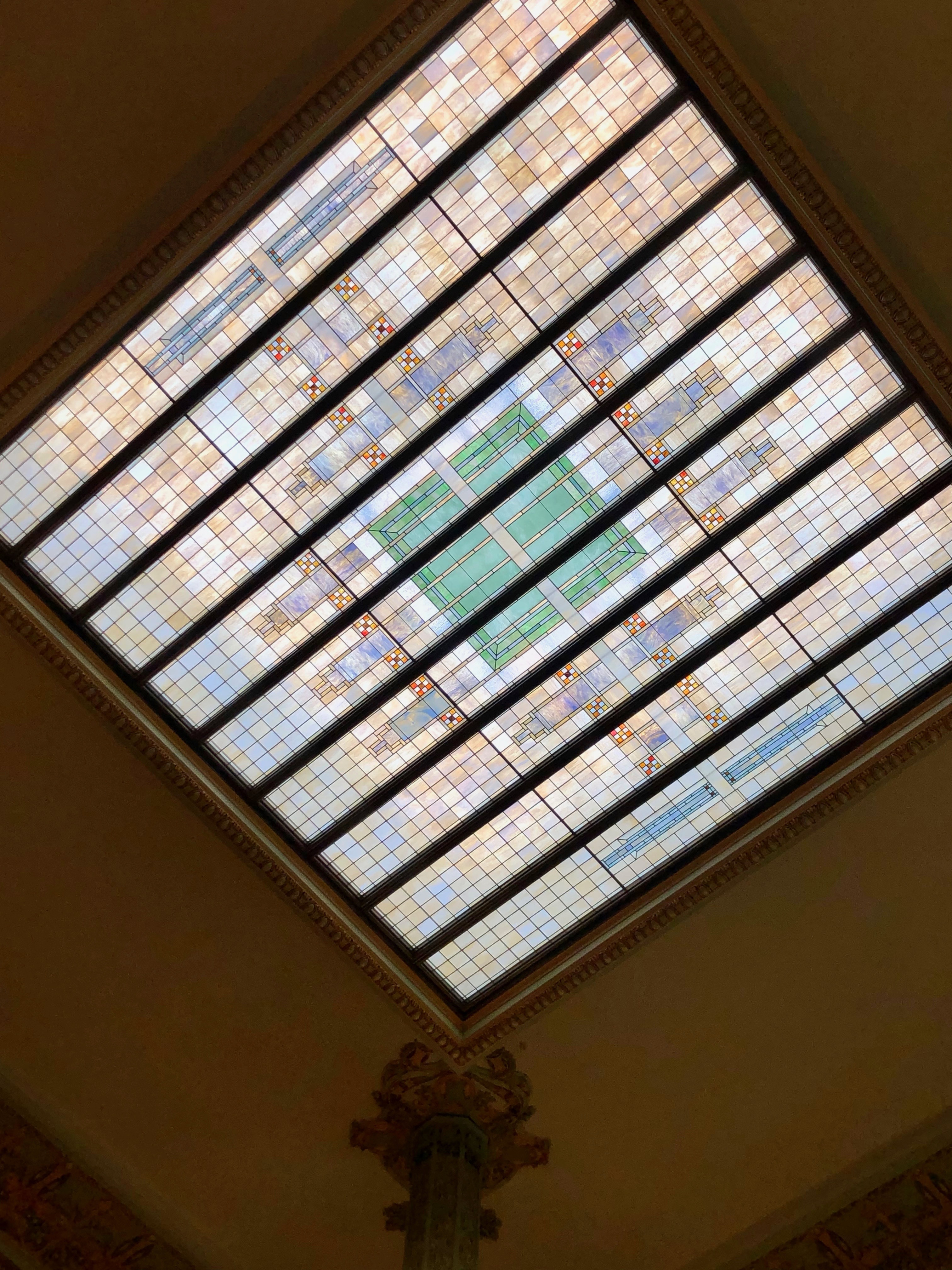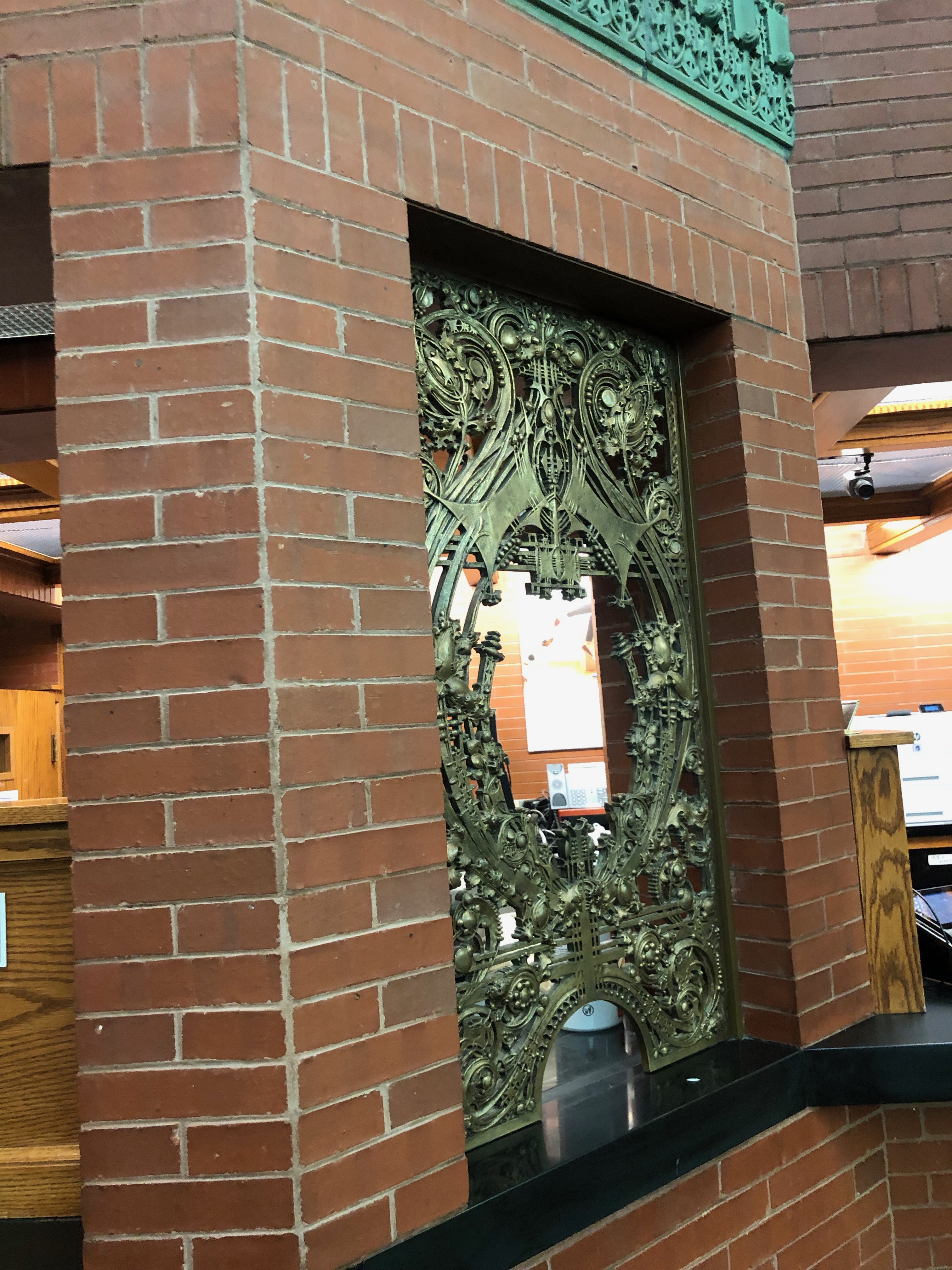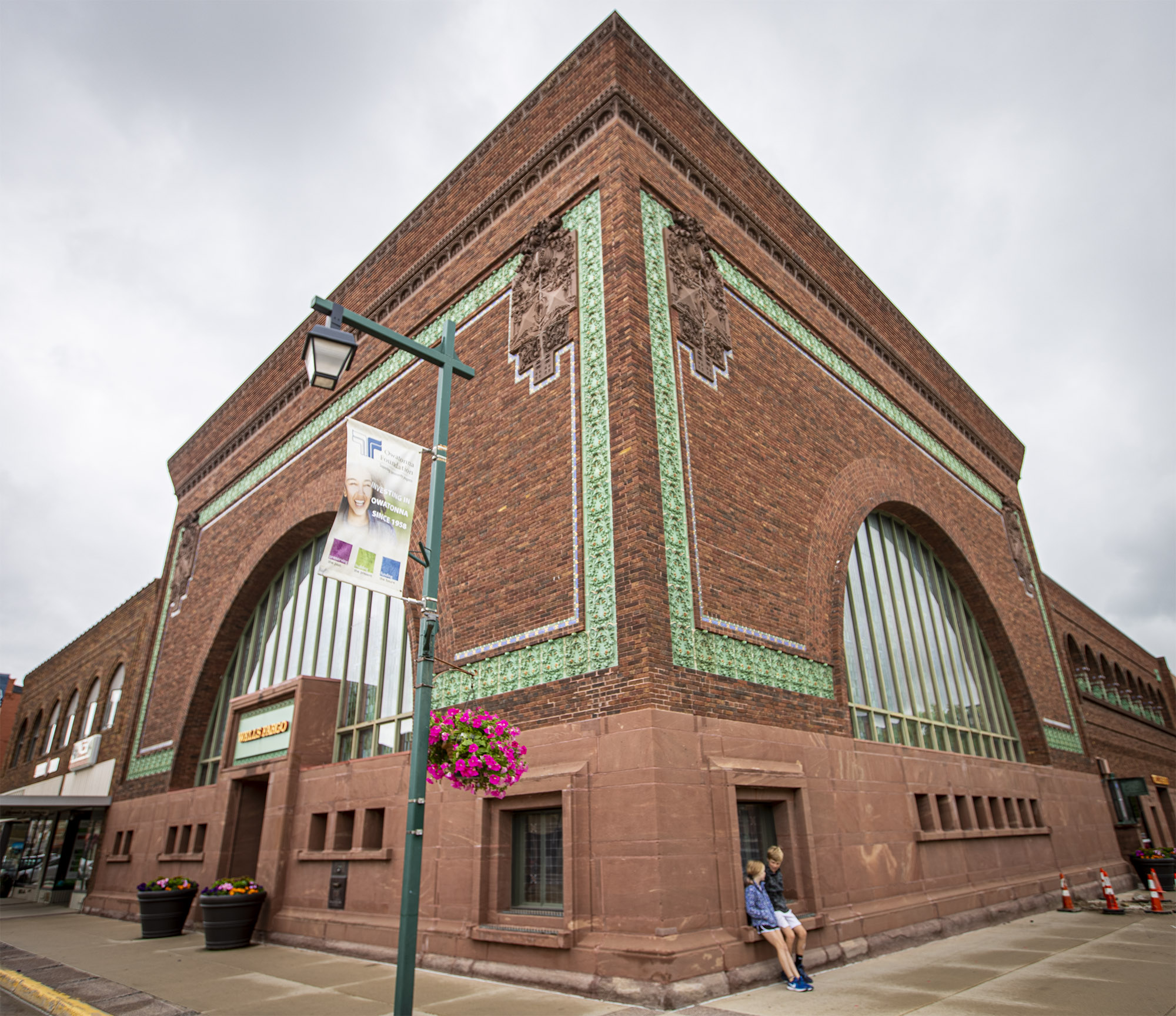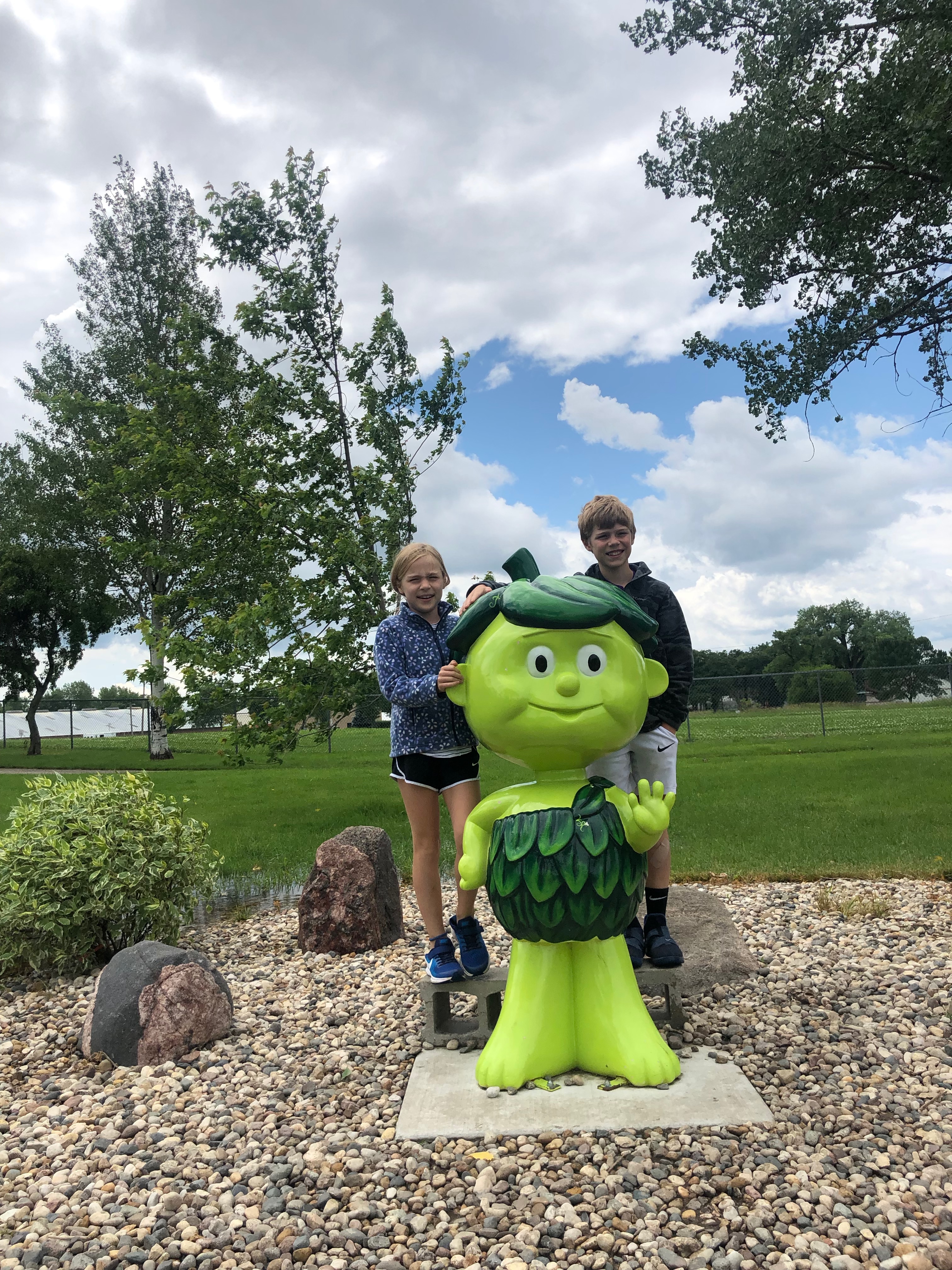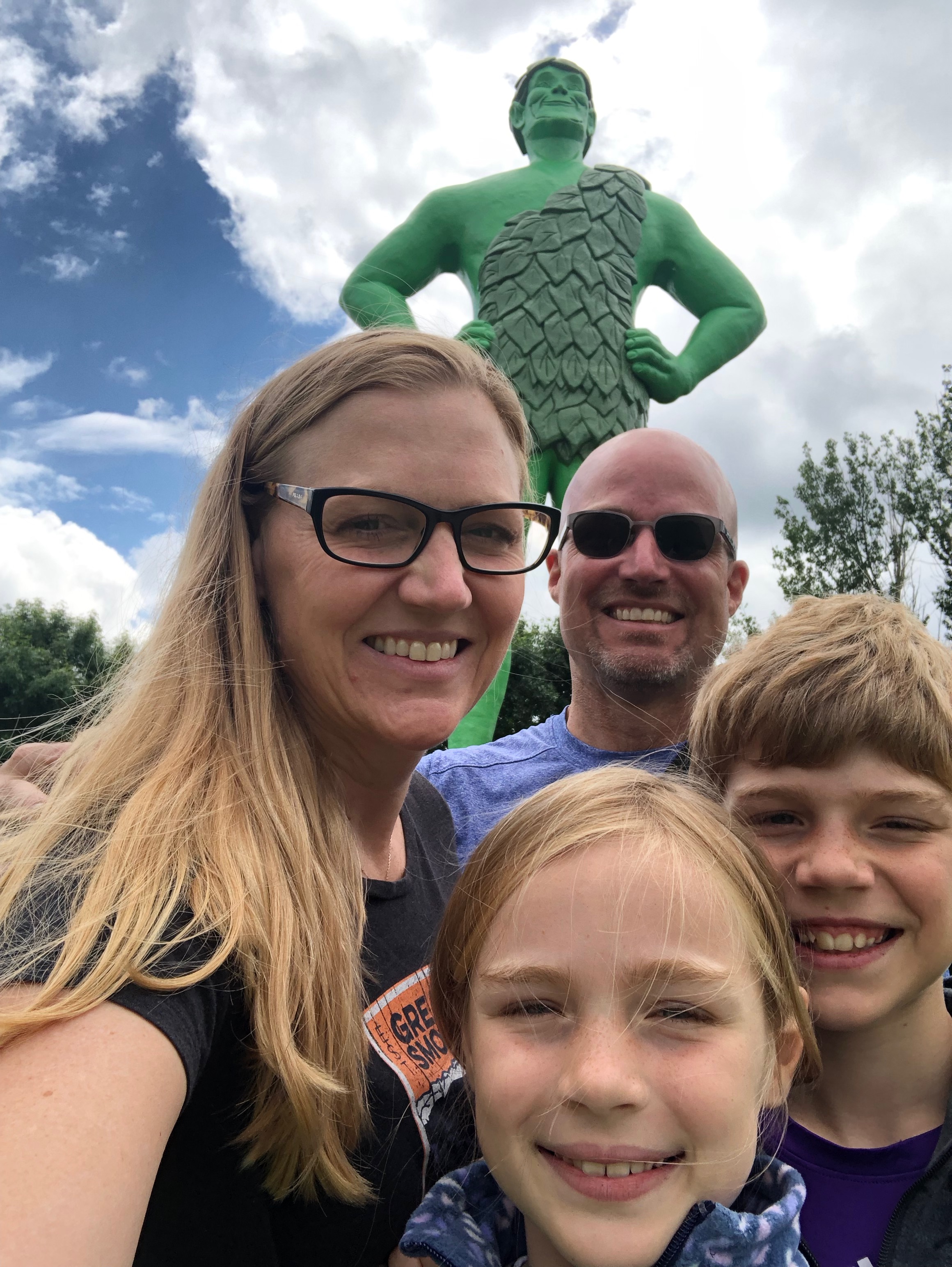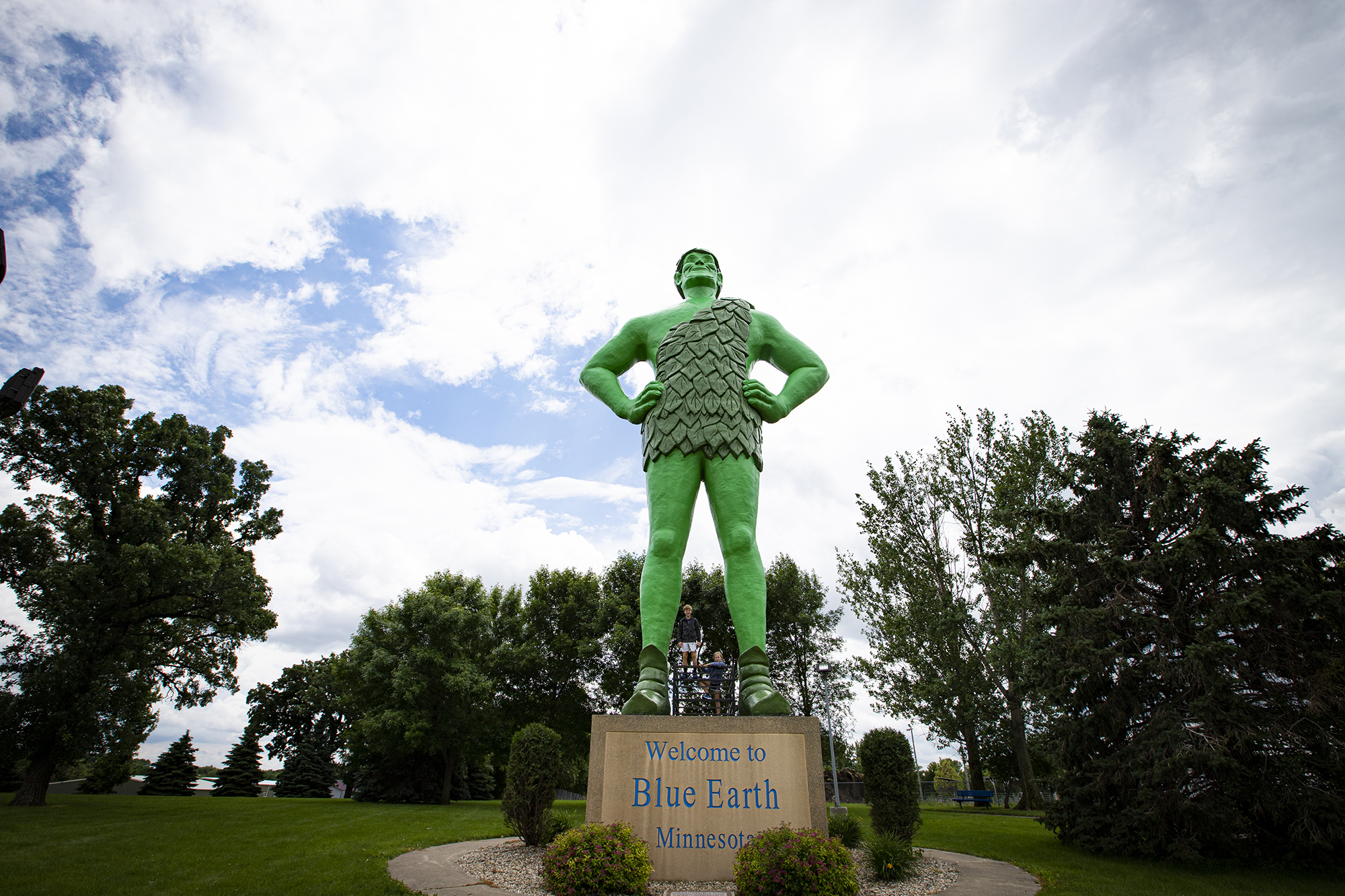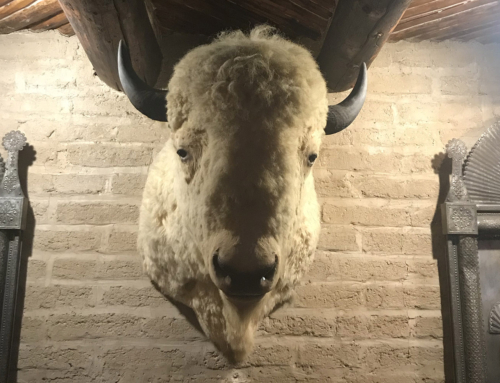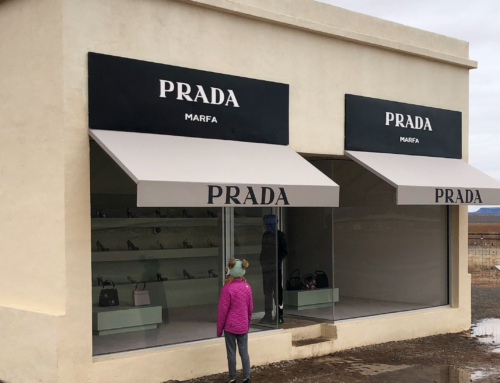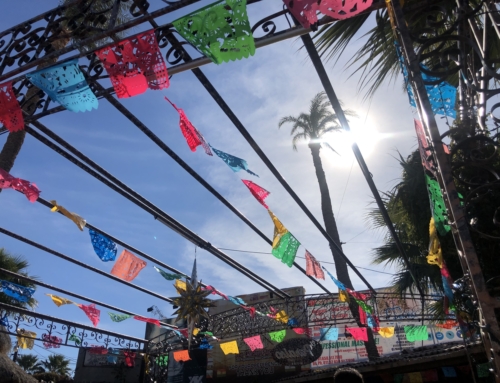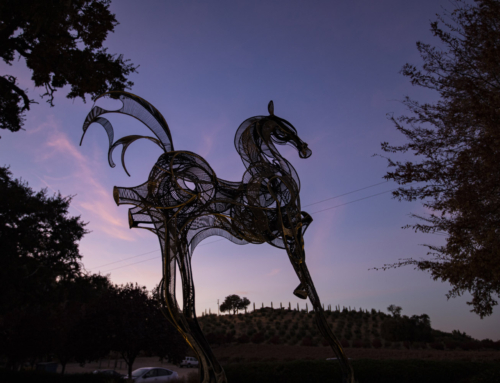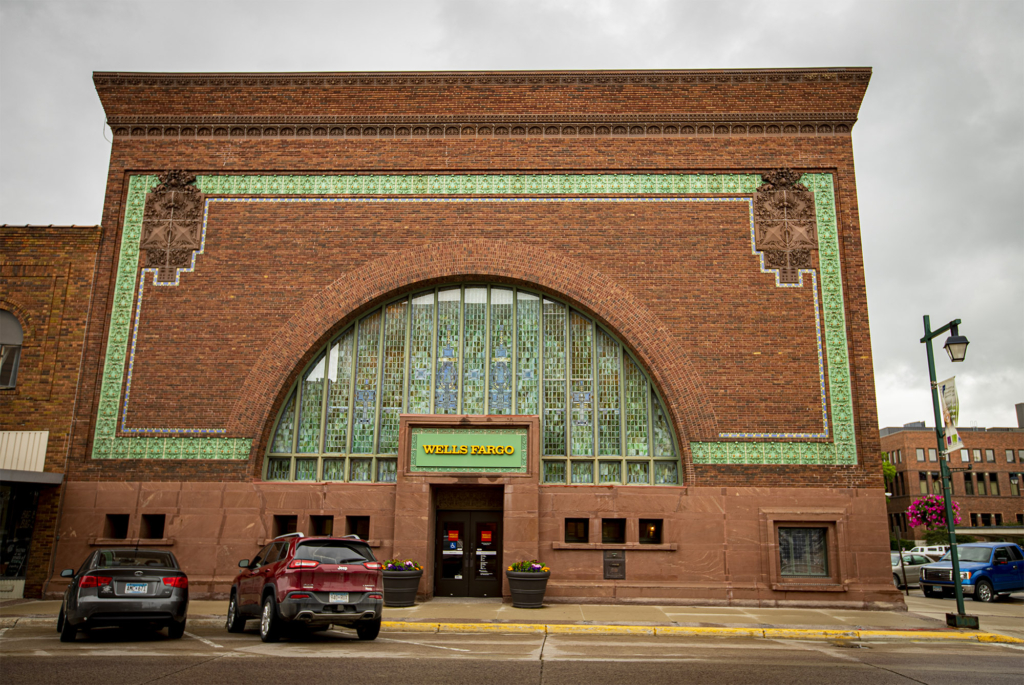
Owatonna Jewel Box Bank
We are making our way over to the Badlands, which for some reason in my mind is the “real” start of the trip. Maybe because it’s the first National Park we’ll visit, but probably more because the Badlands are the first place we will be that looks REALLY different than home. So far, most of where we have been is farmland and greenery…deciduous trees, lakes, and so on. Other than really flat stretches and great big windmills, it’s very familiar to Kentucky and Indiana.
The drive from the Dells to the Badlands is 10+ hours by car, far longer when you are pulling a trailer and have all the bathroom and eating stops, so we are making two overnight stops. Our first stop was one night in southern Minnesota. It basically rained ALL NIGHT LONG, so even though we had an awesome campsite that was secluded back in the woods and was out on a little island, we didn’t get to do much there. However, it was an ideal location to stop because it allowed us to make a quick 30 minute drive to Owattona, Minnesota to see one of Louis Sullivan’s Jewel Box Banks.
Dennis and I had read about the banks years ago and thought they sounded incredible. We have driven within 100 miles of several of them on this trip, but the Owattona one was the closest, and is also considered one of his best. Quick background: Louis Sullivan was a prominent architect in Chicago after the great fire, and is considered the father of the American skyscraper. He helped develop the Prairie School of Architecture and Frank Lloyd Wright worked for him early in FLW’s career. Wright called him a mentor. He has also been attributed with the phrase “form follows function.” He designed the banks late in his career after he had lost some popularity. You can read more about him and the bank we visited here.
When we walked in, Maya said “whoa it’s like a church!” I think she was referring to all the stained glass and ornamentation, but the fact that banks are quiet places probably didn’t hurt. It is a truly beautiful place. There is no way that we can fully show you the effect in pictures or even in videos…and I think the photos do less to capture the effect of this bank than one is able to capture the feeling of, for example, a giant cathedral.
The bank is small in footprint…maybe 60 feet across, but with walls on all four sides that are about 25 feet tall. And the top half of two walls and inset in the ceiling are huge stained glass windows in mostly greens and blues. Large murals of farm scenes cover the other two walls, and the remainder of the top half of all four walls are filled in with mosaics, plaster relief decoration and other ornamentation. Four chandeliers hang from the ceiling lighting up the upper half with a glow to add to what is coming through the windows. The bottom half of the building is dark wood and brick.
The effect of all of this surrounding you in such a small place is what I think makes it so hard to capture via pictures. We have images of each wall and so many of the details, but walking in to a small, closed area and being surrounded on all sides is really what makes it special…and yes, makes you feel like you are in a jewel box. What’s also impressive is that even though every inch was covered in some kind of artistic feature, it did not seem gaudy or overdone. Perhaps because the color palette was so cohesive, and very earthy? Not sure. I just know if I tried to pull that off it would look like one of those Christmas trees at Cracker Barrel.
And then, to make sure our kids are well rounded in this “road scholar” education, we stopped to see the Jolly Green Giant.
